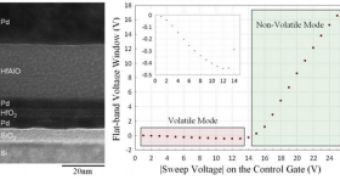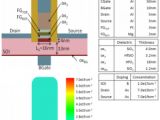Scientists have just announced that they managed to create a new device that could blur the line between volatile and non-volatile memory, allowing them to replace both types of storage found inside the computer (RAM and SSDs) with a single component.
The devices are called dual-floating gate field effect transistors, or DFG-FETs for short, and were developed by scientists from the North Carolina State University, who have published their work in the Journal of the IEEE Computer Society, as DailyTech reports.
At this time, memory takes two distinct forms inside a computer, RAM, which is fast but volatile and can only be used for storing data when the system is turned on, and NAND flash which is slower but can store data even after the machine is powered off (non-volatile).
Although they sound different, both are quite similar in structure, so the researchers have developed the DFG-FET transistors that pack both devices inside a single cell.
The state of the transistor is changed by applying different voltages to the DFG-FET, effectively creating a form of universal memory.
“We’ve invented a new device that may revolutionize computer memory,” said Dr. Paul Franzon, a professor of electrical and computer engineering at NC State and co-author of a paper describing the research in a press release.
As far as its applications go, before making its way inside computer systems, the technology could be used for large server farms, enabling them to turn specific servers to save power without losing any data.
In addition, DFG-FET memory could also be used for creating a new type of FPGA circuit that could offer both space and power savings over current designs as well as instant-on notebooks and other types of mobile gadgets such as tablets or smartphones.
Sadly, it seems like there is still some time to go until the technology becomes mature enough to be used in everyday devices. (via Bit-tech)

 14 DAY TRIAL //
14 DAY TRIAL // 
